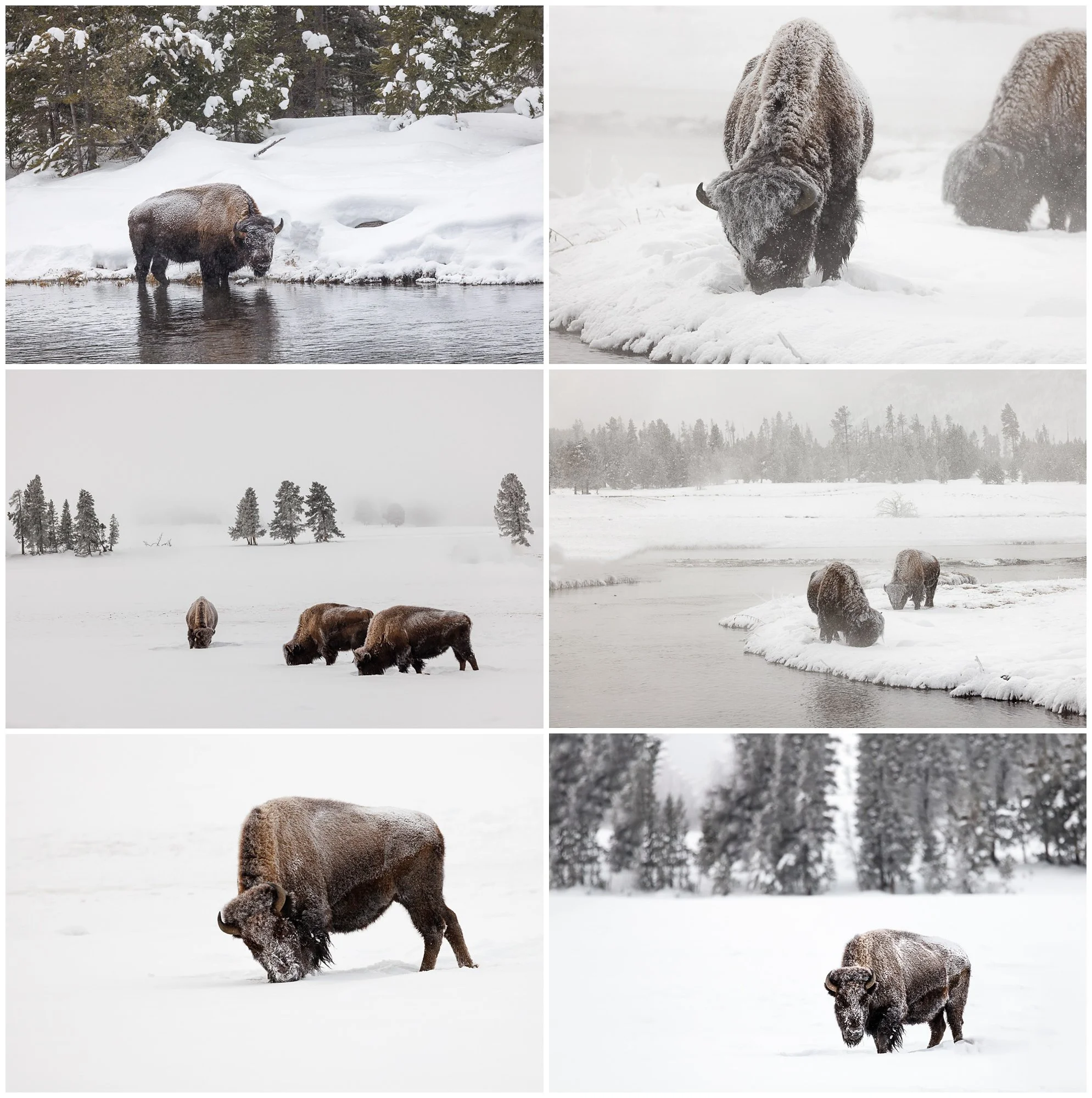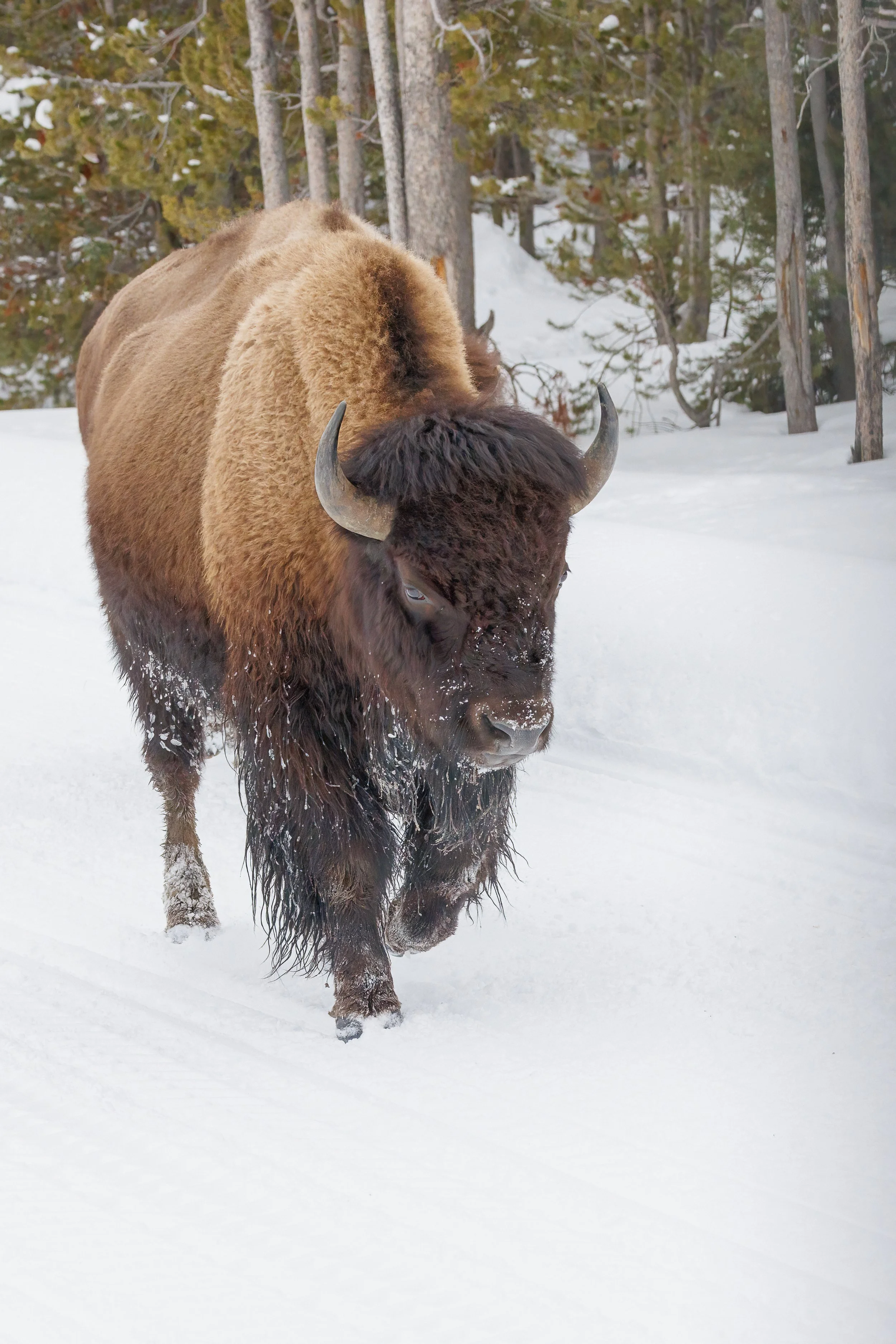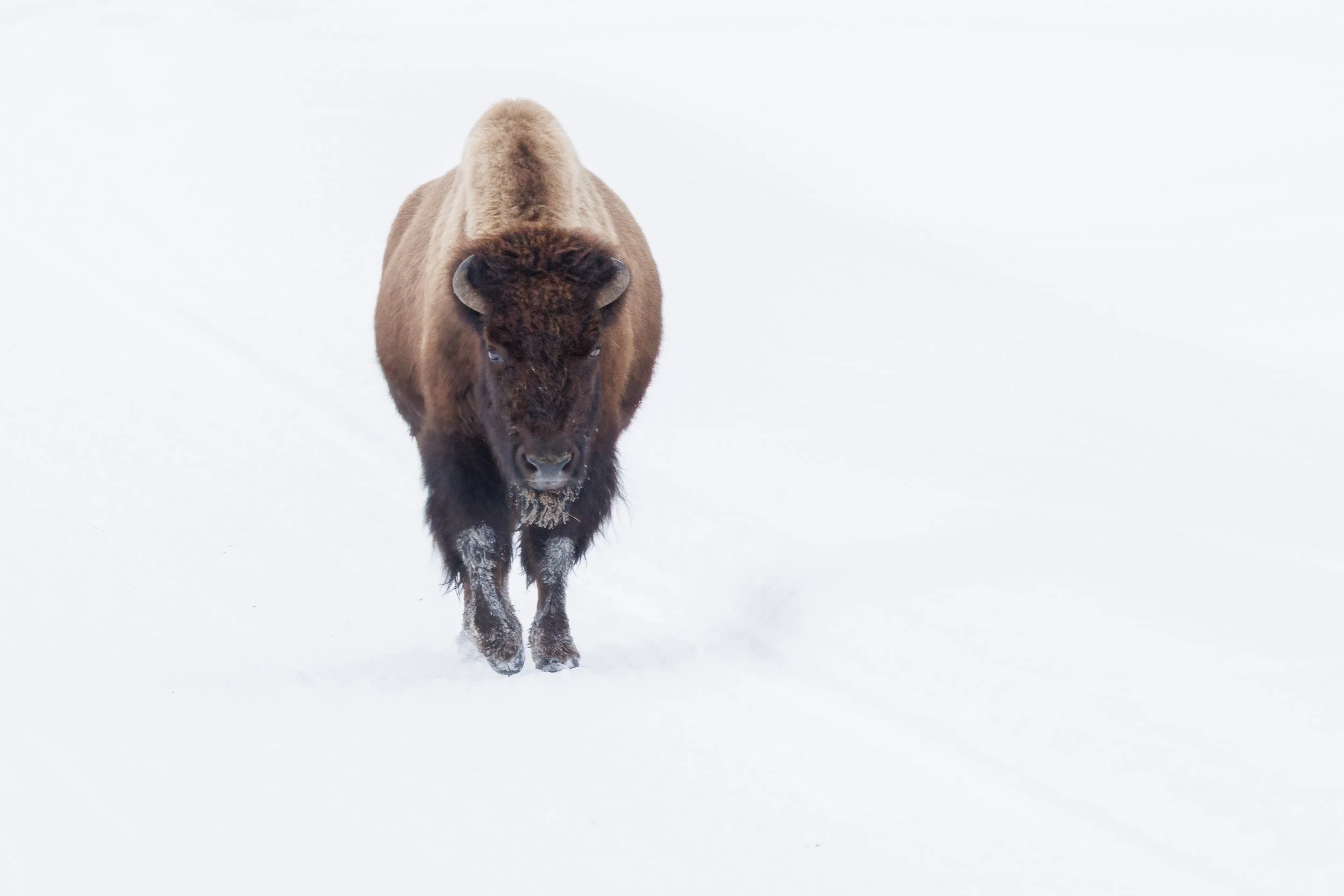Bison | Surviving Winter in Yellowstone National Park
Unlike the summer months when the national parks are teaming with visitors, winter brings far fewer visitors. In fact, in Yellowstone NP, the public is required to enter the park only with a licensed guide from December 15 through March 15. It’s easy to see why with the amount of snowfall that the park gets. For us, traveling in the park in winter requires specialized vehicles - snow coaches. For the animals it’s all about surviving winter in Yellowstone National Park.
The animals there are focussed on surviving winter with foraging for plants buried under the snow or prey doing their best to stay out of sight. But, the search for food is an ongoing process regardless of the animal or the weather. It just seems to me that winter has greater challenges than at other times of the year.
Bison use their enormous heads by swinging them back and forth to brush away the snow that covers their path. This allows them to move forward and also uncover edible grass and plants. It’s a continuous effort until it’s time to move to another area or to process what they’ve already eaten. It’s especially important that they stay nourished since the females are all pregnant and will give birth in the spring.
“Plants and animals don’t fight the winter; they don’t pretend it’s not happening and attempt to carry on living the same lives that they lived in the summer. They prepare. They adapt. They perform extraordinary acts of metamorphosis to get them through. Winter is a time of withdrawing from the world, maximising scant resources, carrying out acts of brutal efficiency and vanishing from sight; but that’s where the transformation occurs. Winter is not the death of the life cycle, but its crucible.”
Bison Surviving Winter
The short video below shows the beauty and harshness of winter in Yellowstone National Park.
I feel it is important to note that the vehicle you see in the last clip of the video is not chasing nor herding the animals. It is back quite a distance. It is the compression of the lens I was using that makes it and the animals look so close. I was sitting in the middle seat of the snow coach and shooting through the windshield with a 600mm lens which made everything look closer.
Can’t find what you’re looking for? Use the Search option below.
Join other advanced photographers who are recognized for their technical and creative work. Membership perks include membership to Click Community, over 1000 tutorials, photographer’s directory listing, subscription to Click Magazine, contribute to the Daily Project, bonus entry to VOICE, and so much more! To learn more, go to Click Pro HERE. To apply, use the link above.
* * * * * * *
As a published, featured northern California fine art photographer living in the greater Sacramento area, I specialize in fine art landscape and still life photography. My style is authentic, fresh and personality-driven. I offer several educational opportunities including workshops and photography mentoring. You can learn about them by going to SERVICES. While currently living in rural northern California with my husband and a couple thousand walnut trees, I post regularly to Instagram.
Please CONTACT ME with any questions or to schedule your learning session.
Serving Yuba City/Marysville, East Nicolaus, Wheatland, Lincoln, Woodland, Davis, Roseville, Rocklin, and the greater Sacramento area.
(530) 633-7575
Join other advanced photographers who are recognized for their technical and creative work. Learn more HERE.

























Foxes are fascinating and elusive creatures. So when a friend said she knew the location of some foxes and suggested we go photograph them, I was all in!